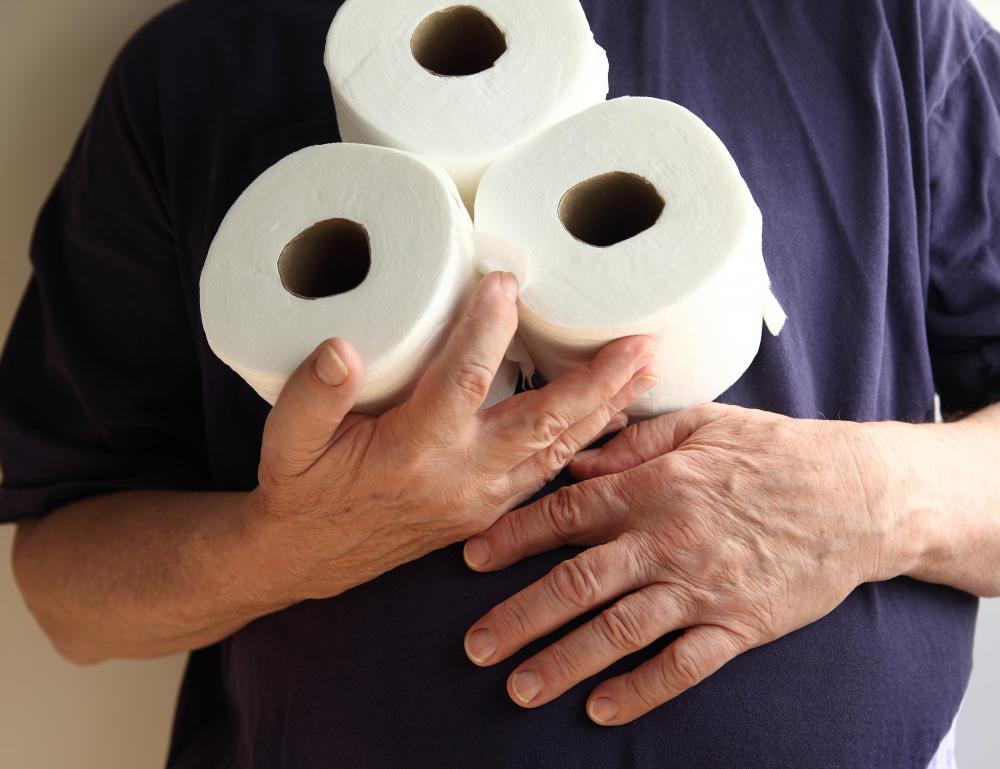At AllThingsNature, we're committed to delivering accurate, trustworthy information. Our expert-authored content is rigorously fact-checked and sourced from credible authorities. Discover how we uphold the highest standards in providing you with reliable knowledge.
What Are the Different Types of Hamster Toys?
Hamsters are small, low-maintenance pets, but they need toys to keep them entertained and happy, just like any other pet. Hamster toys don't have to be complicated or expensive, and some of the best ones are created from items found around the house. Most hamsters will enjoy toys that give them places to hide and new things to chew on.
Pet stores carry a wide variety of hamster toys. Plastic boxes and tubes are a chew-proof source of entertainment for any hamster, especially when he or she is given shredded paper or wood chips to store in the toys. Tubes of the same brand often screw together and can be used to create a maze within the cage. Chew toys are also good for hamsters, and keep them occupied and their teeth healthy. Wooden blocks or hamster toys made from pressed alfalfa and binding materials can serve double duty as hiding places and chew toys.

Wheels, whether made of metal or plastic, are a must in any hamster cage, as these will help keep the hamster occupied and exercised. Hamsters are largely nocturnal, however, and if the cage is in a bedroom or any other room where quiet is desired at night, it can be worth looking for a wheel that is silent when turning. Similarly, large plastic balls the hamster can be put inside allow him or her the freedom to safely run around the house; this should only be done with supervision, especially when there are stairs or other, larger pets involved.

Homemade hamster toys can also provide hours of affordable entertainment. Cardboard tubes from paper towels or toilet paper can make excellent chew toys, especially when stuffed with bedding and treats. Boxes similarly stuffed with bedding can be endlessly entertaining, whether the hamster is using them to stack and climb on or burrow inside. Plastic cartons carefully trimmed to remove sharp or rough edges can also double as burrows. If the cage is big enough, pieces of untreated wood can be arranged to make a series of ramps that will often function as chew toys.
Food and treats can also form the basis for different types of hamster toys. A paper bag filled with bedding and a few treats in the bottom will give a hamster something to keep him occupied; hamsters love shredding things and arranging, so when cleaning out the cage and replacing bedding, give him the fresh bedding in a bag and let him do the work himself. A plastic bottle with sunflower seeds or other treats inside will make the hamster work at getting the food out.
Frequently Asked Questions
What types of toys are essential for a hamster's well-being?
Hamsters require a variety of toys to satisfy their natural instincts and maintain physical and mental health. Essential toys include exercise wheels for physical activity, chew toys to maintain dental health, tunnels for exploration, and hideouts to provide a sense of security. According to the Humane Society, providing a stimulating environment with these toys can prevent boredom and stress in hamsters.
Are exercise wheels safe for hamsters, and what type should I choose?
Exercise wheels are safe for hamsters if chosen correctly. It's important to select a solid-surface wheel that is large enough to prevent back curvature while running. The American Society for the Prevention of Cruelty to Animals (ASPCA) recommends wheels with a diameter of at least 8 inches for Syrian hamsters and slightly smaller for dwarf species to ensure safety and comfort.
How often should I replace my hamster's toys, and why?
Hamster toys should be checked regularly for signs of wear and tear, especially chew toys, which can become hazards if pieces break off. Replacing toys every few months or when they show significant damage is advisable. This not only ensures safety but also keeps the hamster's environment interesting and engaging, as noted by animal behavior studies.
Can I make DIY hamster toys, and what materials are safe to use?
DIY hamster toys can be a fun and cost-effective way to enrich your pet's habitat. Safe materials include untreated wood, cardboard, and toilet paper rolls. Avoid materials that can splinter or are treated with chemicals. The National Hamster Council suggests monitoring your hamster with any new toy to ensure it doesn't ingest harmful materials.
What are the benefits of providing a variety of toys for my hamster?
Providing a variety of toys for your hamster has multiple benefits. It encourages natural behaviors like foraging, gnawing, and burrowing, which are crucial for their physical and mental health. A study published in Applied Animal Behaviour Science found that environmental enrichment, including diverse toys, can reduce stress and improve the overall well-being of captive animals.
How can I tell if my hamster enjoys a particular toy?
You can gauge your hamster's interest in a toy by observing its interaction with it. Hamsters that frequently use a toy, such as running on a wheel or chewing on a specific item, are showing enjoyment. Conversely, if a toy remains untouched for extended periods, it might not be appealing to your pet. Observational studies on hamster behavior suggest that active engagement is a clear indicator of preference.
AS FEATURED ON:
AS FEATURED ON:












Discuss this Article
Post your comments